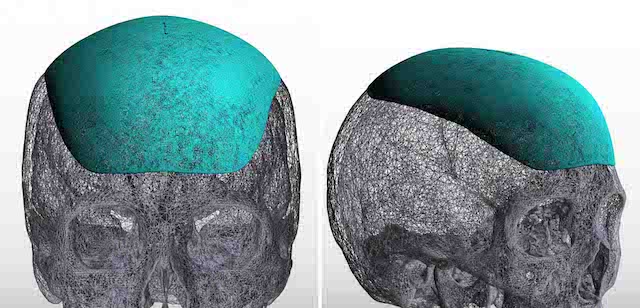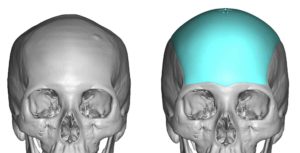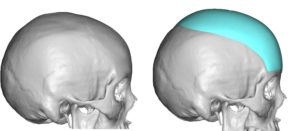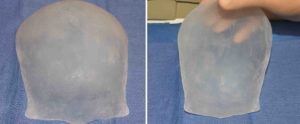Background: The shape of the female forehead has some different features than that of a male. It has more of a vertical inclination and a rounder and more convex shape from side to side. There is usually no discernible brow bone break due to having smaller frontal sinuses. In contrast a male has slightly more backward forehead inclination, flatter from side to side and has a visible brow bone break.
in creating the rounder and fuller forehead in a female it is important to also consider skull height. The upper forehead must blend back into the top of the head which also provides an opportunity to increase skull height as well. The importance of considering the forehead and skull height together is that the overall convex shape of bony skull surfaces (front, top and back) precludes just augmenting one side or surface without blending into another in an aesthetically successful fashion. Augmenting skull surfaces requires a smooth transition between them, which means a primary augmentation area must at least blend into the adjacent bay surface.


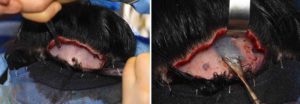
Female forehead augmentation can be successfully done using a custom implant design. Placing it successfully through a small scalp incisions requires certain maneuvers to ensure it is oriented properly and all edges lay flush with the bone. When doing so through a small scalp incision, where only a very small portion of the implant is actually seen, requires intraimplant positioning techniques.
Case Highlights:
1) Rounding out of a flat forehead head in a female requires extending back into the superior skull for a smooth transition.
2) A flatter forehead is often associated with a low skull height
3) A custom skull implant can be designed to augment the forehead and extend to the back end of the superior skull surface
Dr. Barry Eppley
Indianapolis, Indiana

